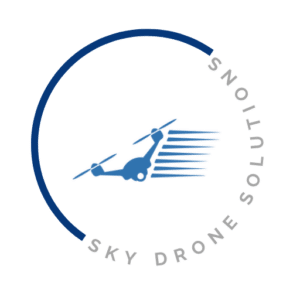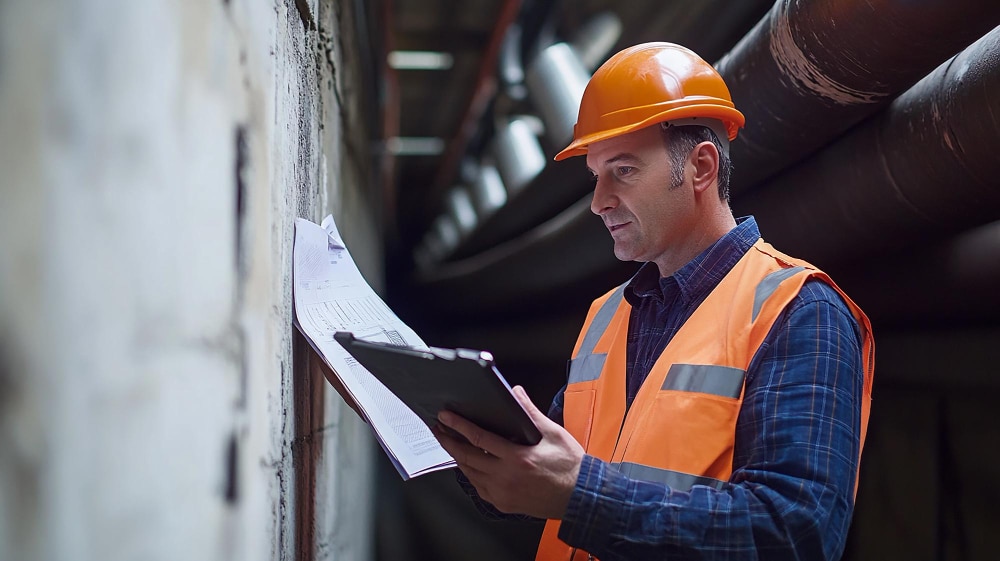The Advantages of Using Drones for Building Inspections
Leveraging the benefits drones provide has revolutionized inspection methods for building inspections. Drone inspections offer unparalleled visual inspections, providing high-resolution imagery and real-time data collection.
Drone-based inspections enable access to hard-to-reach areas, ensuring comprehensive reviews without safety risks. These aerial vehicles reduce the time and cost associated with traditional building inspections, enhancing efficiency and accuracy.
Inspection drones are highly effective in evaluating critical infrastructure, detecting issues that might be missed manually.
Implementing drone services for building inspections allows for faster data retrieval and more informed decision-making.
Aerial drones can effortlessly capture expansive views of the building, offering detailed insights that manual methods can’t match.
The use of inspection drones minimizes the need for scaffolding or ladders, significantly reducing the risk of accidents.
Sky Drone Solutions is committed to providing top-notch drone services that transform the landscape of building inspections, ensuring that every project is carried out with precision and safety. Experience the future of inspection services with our cutting-edge, aerial drone-based inspections.
How Inspection Drones Improve Building Engineering
Inspection drones have revolutionized building engineering with advanced infrastructure inspection techniques. Compared to traditional inspection methods, drone-based inspections are significantly faster and provide more accurate results.
In building inspections, these aerial vehicles capture high-resolution images that enable comprehensive visual inspections from vantage points impossible for manual methods to achieve.
This enhances the precision of aircraft general visual inspections using drone technology. Additionally, drones can inspect hard-to-reach areas, reducing the need for hazardous manual climbs and improving overall safety during the process.
Inspection services utilizing drones ensure that engineering assessments are thorough and efficient. The benefits are immense: reduced time, enhanced data accuracy, and improved safety protocols.
As engineering demands evolve, infrastructure inspection methods employing drones are becoming increasingly crucial.
Drone inspections also aid in creating detailed 3D models and 2D maps, further benefiting construction progress monitoring. Sky Drone Solutions offers leading-edge drone-based inspections, optimizing building engineering projects for success and sustainability.
Requirements for Manual Inspections vs Drone Inspections
When it comes to inspection methods, understanding the requirements for manual inspections versus drone inspections is essential. Traditional inspections often require engineers to use manual methods, which involve physical access to critical infrastructure.
For visual inspections of buildings or power infrastructure, manual inspections typically need scaffolding or lifts, making the process more time-consuming and risky.
By contrast, drone inspections streamline inspection services, offering safer and more efficient alternatives. Drones access hard-to-reach areas quickly, reducing the need for extensive physical setups.
Moreover, drone inspections can cover more ground in less time, capturing high-resolution images and videos for accurate data analysis.
While manual inspections rely heavily on the expertise of engineers, drone inspections harness advanced technology to deliver precise results.
The use of drones in infrastructure inspection not only enhances the speed of inspections but also improves safety and accuracy.
Understanding these requirements helps in comparing the two inspection methods, highlighting the unique advantages that drone inspections bring to infrastructure and building projects.
What Inspectors Need for Infrastructure Inspection
Infrastructure inspection is crucial for maintaining the safety and integrity of critical infrastructure. Inspectors require various tools and technologies to carry out thorough inspections.
Traditionally, manual inspections have been the norm, requiring inspectors to physically access and examine structures.
However, with the advent of drone-based inspections, the efficiency and safety of visual inspections have significantly improved.
Inspection drones provide a unique advantage by offering high-resolution imagery and the ability to access hard-to-reach areas without the need for scaffolding or heavy machinery.
For comprehensive infrastructure inspection, both manual and drone-based methods are ideal. Manual inspections allow for hands-on evaluation, while drones offer a bird’s-eye view of the site.
This combination is particularly beneficial in sectors like engineering, construction, and energy. When it comes to monitoring and inspection services, utilizing both methods ensures a thorough assessment of the site.
Ultimately, the key to effective infrastructure inspection lies in integrating both inspection drones and manual techniques to cover all aspects of critical infrastructure.
The Future of Infrastructure Inspection: Drones and Manual Methods
The future of infrastructure inspection is being shaped by the evolving combination of drone inspections and traditional manual methods.
Drone inspections offer unmatched aerial perspectives and efficiency, making them ideal for comprehensive building inspections and visual inspections.
These modern techniques provide high-resolution data and can cover large areas swiftly. However, manual inspections still play a crucial role, particularly when detailed, hands-on investigation is necessary.
The collaboration between drone services and manual methods creates a robust inspection style that leverages the benefits of both. Utilizing aerial vehicles allows for safe, quick, and thorough assessment, while manual inspections address nuanced issues.
Sky Drone Solutions is at the forefront of integrating these modernizing technologies into engineering practices, leading to more accurate and reliable inspection services.
In conclusion, the ongoing advancement in inspection styles will continue to refine infrastructure inspection, combining the best aspects of innovation and tradition for the benefit of engineers and inspectors alike.
Advantages of Using Inspection Drones or Manual Methods
The advantages of using inspection drones compared to manual inspection methods can’t be overstated. Drone inspections offer numerous benefits, particularly when it comes to inspecting critical infrastructure.
Unlike manual inspections, inspection drones can access hard-to-reach areas effortlessly, making building inspections both safer and more efficient.
The ability to inspect large areas quickly with aerial vehicles enhances the thoroughness and speed of inspections. Additionally, drone inspections minimize the risks faced by engineering professionals during manual inspections.
When inspecting critical infrastructures, the benefits drones provide in terms of safety and efficiency are incomparable. However, it’s essential to recognize that there are still scenarios where manual methods are necessary.
For instance, certain detailed, close-up inspections might require the tactile abilities and judgment of a human inspector, which drones can’t replicate.
By combining the strengths of both drone and manual inspection methods, we can achieve a more comprehensive and reliable approach to inspecting various structures.
What are some of the cost savings
When evaluating the benefits of drone inspections versus manual inspections, one of the critical advantages is the significant cost savings.
Drone inspections drastically reduce the cost associated with traditional inspection services. By utilizing aerial capabilities, drones can inspect critical infrastructure more efficiently, cutting down the time needed for inspections. This time efficiency directly translates into cost savings in terms of labor and operational expenses.
Manual inspections often require extensive management and monitoring, which adds additional cost burdens. On the other hand, drone inspections simplify inspection methods, resulting in lower overall costs.
Additionally, drones can easily navigate complex environments, offering a more thorough examination, hence further reducing the costs of potential re-inspections. Power consumption is also minimized, as drones are generally energy-efficient compared to manual methods.
The collective benefits of drone inspections make them a more cost-effective solution for infrastructure management, offering substantial savings without compromising on the quality of inspection services.
For modern infrastructure projects, the integration of drone technology represents a forward-thinking approach that delivers long-term economic benefits.
Improve project safety and fewer accidents
By adopting drone inspections, project safety is significantly enhanced, and the likelihood of accidents is reduced. Unlike manual inspections, drone inspections allow for comprehensive visual inspections from the safety of the ground, minimizing the risk to workers.
This is crucial in construction and building projects, where hazardous environments can make manual inspections perilous.
Drones, or aerial vehicles, provide an additional layer of monitoring, ensuring areas difficult to access are thoroughly checked without putting workers in harm’s way.
In the energy sector, drones can quickly perform inspection services on infrastructures such as wind turbines and power lines, again reducing the need for potentially dangerous manual efforts.
Utilizing drones translates to considerable time savings, allowing teams to focus on other critical tasks while reducing overall risk. By integrating these advanced methods,
Sky Drone Solutions offers improved project safety and fewer accidents, emphasizing the importance of modern technology in enhancing the efficiency and safety of traditional inspection practices.
Get accurate data in 3D models
One of the key benefits of drone inspections over manual inspection methods is the ability to collect accurate data and convert it into detailed 3D models.
At Sky Drone Solutions, our aerial vehicles are equipped with advanced sensors that streamline the process of gathering comprehensive data during building inspections and infrastructure inspection.
These 3D models provide critical insights into structural integrity, allowing for precise evaluation and planning in fields such as construction and engineering.
Compared to traditional visual inspections, drone services enable professionals to conduct more thorough assessments of critical infrastructure while minimizing time and risk. This modern approach offers unprecedented detail, enhancing the overall quality and efficiency of inspection procedures.
Drones can cover hard-to-reach areas, making them an invaluable tool for drone inspections and modern inspections.
By utilizing these advanced technologies, you ensure your projects benefit from the highest standard of data accuracy and safety, crucial for successful infrastructure inspection and more.
2D maps for construction progress
In the realm of construction, monitoring progress is crucial for timely project completion, and 2D maps generated through drone inspections offer significant advantages.
These aerial vehicles provide a bird’s-eye view of the site, delivering high-resolution images that are invaluable for tracking construction progress.
Compared to manual inspections, drones quickly cover vast areas, making them more efficient for visual inspections of critical infrastructure. Engineers and project managers can utilize these 2D maps to assess the state of the site, ensuring all milestones are met.
Drone inspection methods enhance the accuracy of building inspections by offering clear, comprehensive visual data. Incorporating drones into construction not only streamlines the inspection process but also fosters innovation in engineering methods.
Additionally, these aerial techniques help in identifying potential issues early, thus preventing costly delays.
By relying on drone-generated 2D maps, stakeholders can make informed decisions, making the entire infrastructure and construction workflow more effective and reliable.

